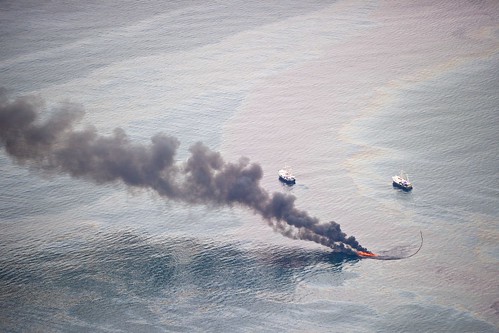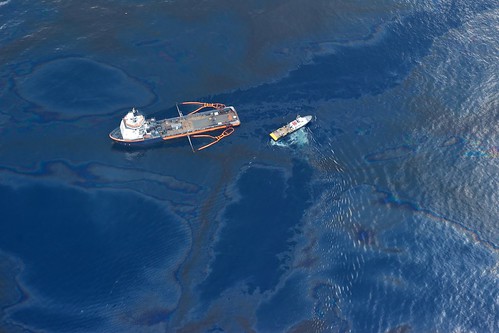James Duncan Davidson, TED's conference photographer, is among a crew of five photographers and videographers reporting on the Gulf of Mexico for the TEDxOilSpill Expedition. His photos, taken aboard a plane above the Deepwater Horizon accident site, reveal the staggering extent of the oil slick. See the full photo set >>
Burning oil on the surface of the Gulf of Mexico.
The first major oil slick we saw on the way to the Deepwater Horizon site.
Burning oil on the surface of the Gulf of Mexico.
The Deepwater Horizon accident site.
Oil on the surface of the Gulf of Mexico.
The Discoverer Enterprise at the Deepwater Explorer disaster site.
Gas is flared in a controlled burn at the Deepwater Horizon disaster site.
The Discoverer Enterprise at the Deepwater Explorer disaster site.
Gas is flared in a controlled burn at the Deepwater Horizon disaster site.
The Discoverer Enterprise at the Deepwater Explorer disaster site.
Deepwater Driller II at the Deepwater Horizon disaster site. This is one of two drilling rigs drilling the relief wells.
Oil on the surface of the Gulf of Mexico.
Burning oil on the surface of the Gulf of Mexico.
All photos in this set credit: James Duncan Davidson. June 17th, 2010.
For more information:
Help Support the TEDxOilSpill Expedition Team
Follow @TEDxOilSpill on Twitter
Static Photography heads down to the Gulf with TEDxOilSpill Expedition
TEDxOilSpill Expedition photos by Kris Krüg
TEDxOilSpill photos by Duncan Davidson
TEDxOilSpill photos by Pinar Ozger
























 In August of last year,
In August of last year, 
